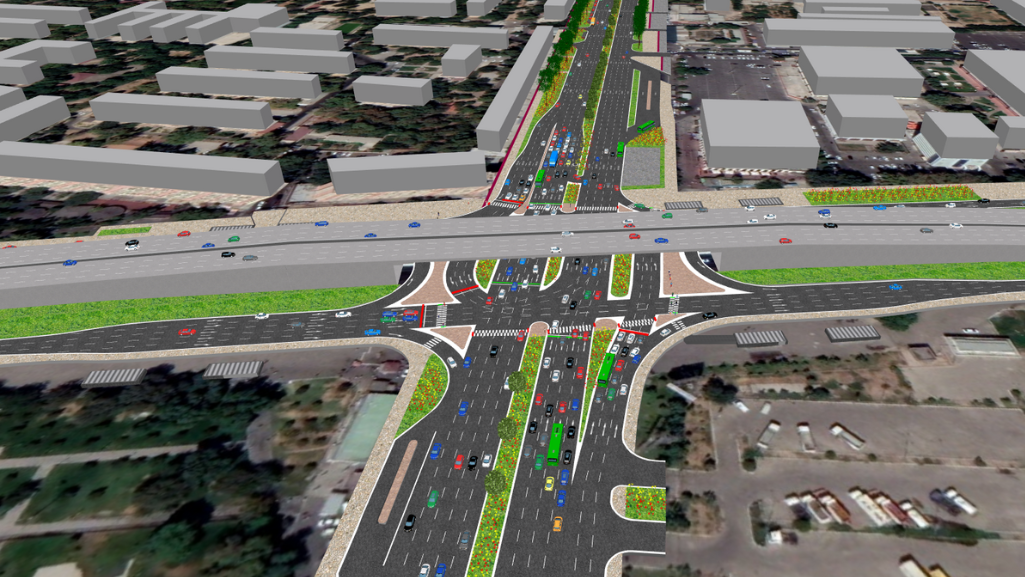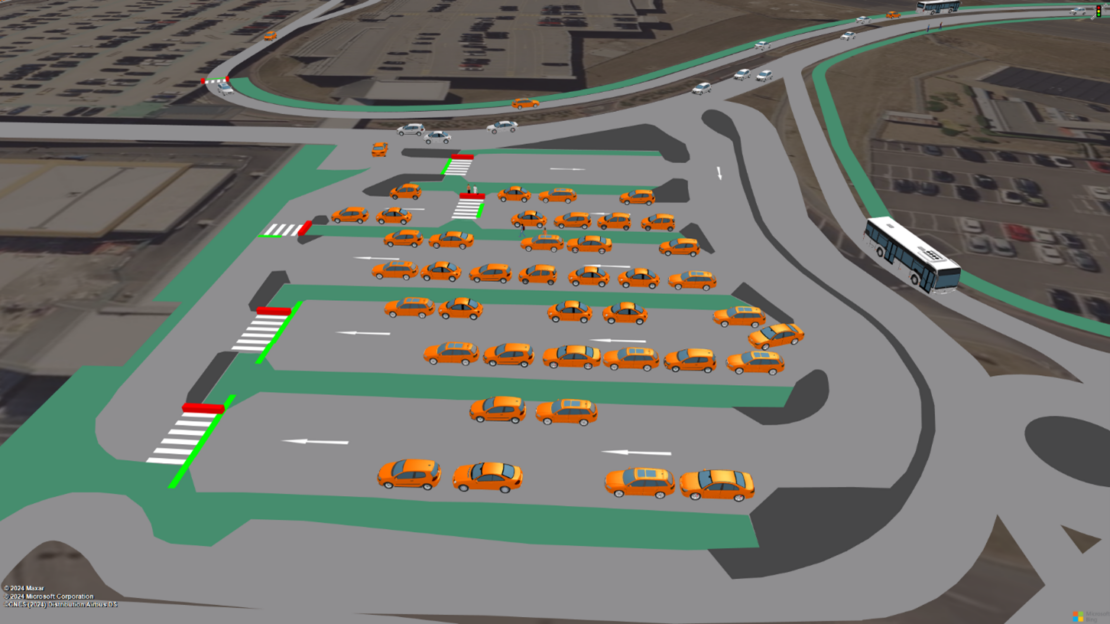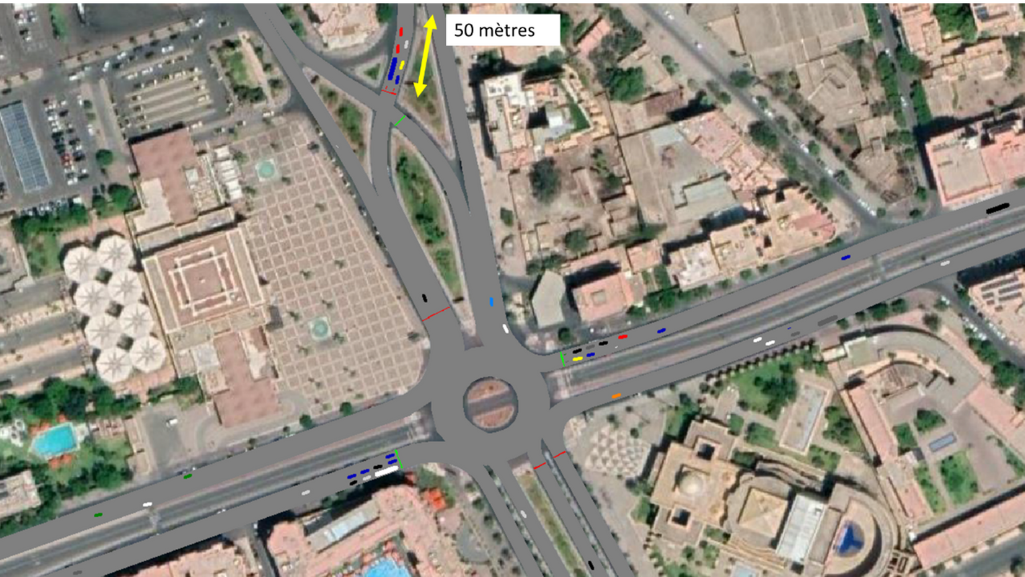Chilanzar Junction in Tashkent, the capital of Uzbekistan, is notorious for daily traffic jams and frequent accidents due to its current layout. This intersection poses significant challenges for both drivers and pedestrians, prompting our project to enhance safety and traffic efficiency.
Our objective is clear: to alleviate congestion, enhance safety measures, and improve overall traffic flow at Chilanzar Junction. This initiative focuses on redesigning critical elements of the junction’s infrastructure and optimizing traffic signal operations.
Research and Data Collection
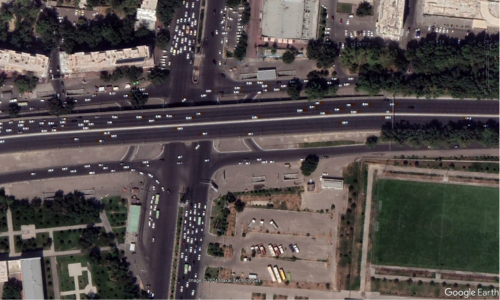
We began with an extensive research phase, gathering real-world data on traffic volumes, bus intervals, and other pertinent factors at Chilanzar Junction. This groundwork was crucial in identifying the most problematic areas and understanding the dynamics of traffic flow.
Microsimulation to Evaluate Impact
To explore potential solutions and validate our design changes, we used PTV Vissim to create virtual models of the junction and evaluate the impact of various adjustments on traffic flow and safety
Adjustments to Junction Geometry
Based on our research findings, we implemented strategic adjustments to the junction’s geometry, including:
- Adding Dedicated Pedestrian Crossings: Enhancing safety by providing clearly marked pedestrian crossings with signal controls to prevent conflicts with vehicle movements.
- Reconfiguring Lane Assignments: Separating turning and straight-going lanes to improve traffic flow and reduce delays.
- Utilizing Empty Space Under the Bridge: Repurposing an underutilized area beneath the bridge to create dedicated left-turn lanes for vehicles, reducing congestion and improving traffic flow.
- Optimizing Signal Timings: Adjusting traffic signal timings to minimize wait times and ensure smoother transitions between phases.
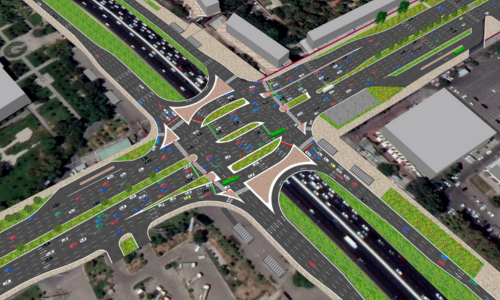
Utilizing PTV Vissim, we simulated scenarios such as adding dedicated pedestrian crossings, adjusting signal timings, and reconfiguring lane arrangements based on the gathered data. We thoroughly analyzed the simulation results to determine the most effective strategies for reducing congestion and improving safety, taking into account the real-world data collected.
Main Findings
Our improvements have yielded significant benefits:
- Notable reduction in traffic congestion during peak hours.
- Decreased incidence of accidents involving pedestrians and vehicles.
- Improved overall efficiency of the junction, benefiting for all users.
The success of our project underscores the potential of advanced simulation tools like PTV Vissim in urban planning. Similar methodologies can be applied in other cities facing traffic challenges, contributing to the creation of safer and more efficient transportation networks.
